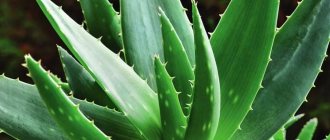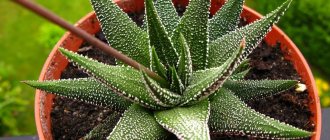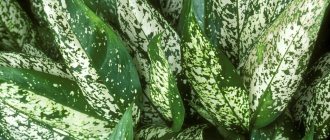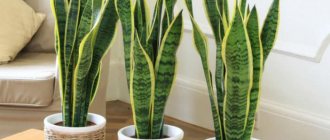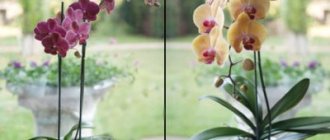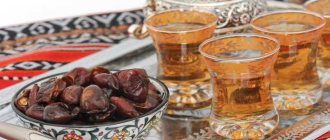Aloe vera is a perennial tropical succulent plant. It is a biogenic stimulant and affects the processes of metabolism and tissue regeneration. It has pronounced laxative, secretory, anti-inflammatory, wound-healing, antimicrobial, and bactericidal properties.
The healing properties and contraindications of aloe vera were known in Ancient Egypt. This plant was considered not only healing, but also sacred. It symbolized longevity and prosperity. It was depicted on the walls of Egyptian tombs, incense was made from it and brought as a sacrificial gift to the pharaohs. And, of course, the famous Cleopatra cream was prepared using aloe juice. The plant was also well known in the ancient cultures of India and China. South American shamans wore dried leaves around their necks as protective amulets. In the modern world, aloe is officially recognized as a valuable medicinal raw material; it is widely used in cosmetology and pharmacology, traditional and folk medicine.
Characteristics of aloe and flower varieties
Aloe is a succulent plant from the Asphodelaceae family. The genus Aloe has about 500 species, but only 3 are widespread in indoor floriculture.
Aloe is a perennial plant. Its leaves are collected in a basal rosette. The growth of the plates occurs in a spiral. The leaves are sword-shaped. Along the edge of the plates there are sharp spines or soft cilia. The color of the leaves is represented by shades of green. There are species with two-color, green-white leaves.
Aloe inflorescences have a tubular shape. They are located on a long peduncle. The color of the flowers depends on the species of the plant. It can be represented in shades of yellow, orange, white and red. The inflorescences have no aesthetic value.
Thanks to the ability to accumulate moisture in the leaves, aloe is a very resilient plant. You can grow the following types of plants at home.
| Species name | Stem | Maximum height, cm | Leaf characteristics | ||
| Maximum length, cm | Color | edge | |||
| tree-like | Pronounced | 100 | 20 (25) | Dark green | Serrated |
| Motley | Very short | 40 | 30 | Bright green with white streaks and specks | Without teeth |
| Faith | Very short | 40 | 50 | Smoky green | Serrated |
The most common type is Aloe Vera.
Features of Aloe Vera
The medicinal properties of aloe vera have been studied the most. It is this type of succulent that is actively used in pharmacology, cosmetology, perfumery, and folk medicine. This particular species is an unpretentious houseplant and at the same time a useful “home healer”.
Origin and range
Aloe is native to North and East Africa. In the wild, this plant is found in Morocco, Mauritania, Egypt, the Arabian Peninsula, as well as in tropical Africa, Madagascar. Aloe is widespread in Asian countries, India, and South America. The island of Socotra is famous for its variety of species of this succulent. Here, by evaporating the juice, the world-famous dry extract of the plant, sabur, is obtained, which can be stored for a long time. In the wild, aloe can withstand arid and hot climates. Some species, such as aloe vera, can reach a height of up to 6 meters. The plant contains a lot of moisture, which it retains by closing the pores on the leaves.
Types of aloe
There are about 500 species of this genus of succulent plants. What medicinal types of aloe can be grown as indoor plants?
- Aloe Barbados, also known as aloe vera, real aloe.
- Aloe variegated.
- Aloe spinosa, or tiger.
- Aloe tree, or agave.
Aloe variegated and spinous are often bred as ornamental indoor plants. They have an "attractive appearance" with beautiful leaf colors and bright flowers. But agave and real aloe are more readily used for medicinal purposes.
Botanical description of aloe vera and care features
What does tree aloe, or agave, which is most often bred as a houseplant, look like? Botanically, it looks the same as its wild relatives, but is much smaller in size.
- Root and stem. The root system is underdeveloped. Traces of dead leaves remain on the woody stem - scars.
- Leaves. They are a leaf rosette that can reach 60–80 cm in diameter. The leaves are greenish-gray, smooth, fleshy, juicy, with jagged edges, slightly convex, pointed at the end. Leaves can grow up to 1 m tall.
- Flowers. In nature, aloe blooms only in the fifth or sixth year of life. In indoor conditions, aloe rarely blooms, and only in the winter months. The flower has the shape of a long raceme, on which bell-shaped, tubular flowers of bright orange color are collected.
How to care for agave?
- Place it on the sunny side, as it is a light-loving plant.
- Turn regularly so that the plant develops evenly.
- Large leaves are tied up.
- The plant is afraid of the cold.
- It likes abundant watering, but the water should not remain in the pan.
- The flower is prone to rotting if there is excess moisture.
- Replanted every three years.
- Active feeding is not recommended, otherwise the flower will grow too quickly.
- When planting, drainage must be placed at the bottom of the pot.
- The soil is formed from turf, garden soil, sand.
- The flower propagates well by cuttings, which quickly take root in water.
Procurement of raw materials
The leaves of the plant are used for treatment. Healing substances accumulate in the pulp of the leaves only in the second year of growth. It’s even better if the agave is at least 4 years old.
- Which leaves should I cut? It is recommended to remove the lower and middle, large and fleshy leaves, at the very base of the stem. Their length should be from 18 to 45 cm. You can also make medicine from the side shoots of aloe, which should be at least 15 cm long.
- How to store aloe leaves? Cut leaves should not be used immediately. The raw materials are kept in the refrigerator for 2 weeks (the leaves are first washed and dried well), tightly wrapped in paper. After aging, you can prepare juice, tincture, ointment, and other forms of medicine from the leaves.
We recommend reading: Medicinal properties and contraindications of hellebore, how to use
When industrially harvesting aloe raw materials, they are dried in special drying ovens. After which the leaves become wrinkled and brown. They can be stored for 2 years. Fresh raw materials are processed no later than after 24 hours, otherwise the beneficial properties of aloe are lost. Industrially, fresh juice is made from the plant, then it is evaporated and sabur is obtained, which is then used in pharmacology in powder form.
The benefits and harms of home flowers
Agave has many beneficial properties. The leaves and juice of the plant are used for medicinal purposes. The juice and pulp of a three-year-old plant, which is collected in late autumn, is considered the most effective.
With the help of a flower they treat:
- constipation, including chronic constipation;
- infectious skin diseases, furunculosis;
- festering wounds;
- streptococcal and staphylococcal infections;
- intestinal, typhoid, dysentery bacillus;
- anemia;
- metabolic problems;
- burns and some skin diseases;
- various forms of neuroses;
- bronchial asthma;
- chronic gastritis and stomach ulcers;
- eye diseases.
However, you should not overuse aloe. This is especially true for the internal use of flower-based products. With long-term use of drugs based on agave, potassium is washed out, which leads to metabolic disorders. Women during pregnancy should not take aloe due to the risk of miscarriage.
Internal use of aloe is contraindicated for people suffering from diabetes, since the plant tends to lower blood sugar levels. In combination with insulin, the patient may develop hypoglycemia. Preparations based on the plant are contraindicated for people with liver diseases, gall bladder, as well as cystitis and hemorrhoids.
What are the contraindications of aloe
Acute forms of kidney, liver, pancreas and gall bladder diseases, cystitis, intestinal obstruction, individual intolerance with an allergic reaction. Aloe provokes a rush of blood to the pelvic organs, so it cannot be taken either internally or externally for hemorrhoids, uterine bleeding and any bleeding from the genital area. Long-term use or overdose can lead to leaching of trace elements - especially potassium.
Recipes with aloe
There are many recipes for preparing medicines using the plant. But due to the presence of a number of contraindications to the use of agave, you should obtain a doctor’s approval before taking it.
For heart
Aloe juice is used to relieve pain in the heart area. In the evening, put 2 tablespoons of hawthorn and crushed strawberry leaves into a thermos. Pour a liter of boiling water over everything and leave to steep overnight.
In the morning, add 2 tablespoons of aloe juice and the same amount of honey to the thermos. Mix everything well and take a glass before bed for a week
For the liver
Agave pulp is used to prevent liver diseases. To do this, pour a teaspoon of nettle root into 200 ml of hot water and leave to infuse for 4 hours. While the nettle is infused, add a tablespoon of nettle and St. John's wort into a separate saucepan. Pour everything into 200 ml of boiling water and cook for 20 minutes. The broth is drained after an hour to give it a chance to brew.
The finished decoction and infusion are mixed. Add a tablespoon of crushed aloe pulp and the same amount of linden honey. The product is used three times a day before meals. The optimal dosage is 1/3 cup.
For cough and runny nose
To treat cough, aloe juice is mixed with honey and lingonberry juice in equal proportions. The medicine is taken one tablespoon 3-4 times a day.
For a runny nose, ready-made aloe extract is used. Place 5 drops of the product into each nostril. The procedure is repeated 2-3 times a day. You can also make the medicine yourself - 3 drops of plant juice per 10 drops of water, instill two drops three times a day.
In gynecology
Women with acute inflammatory processes of the genital organs should take the plant tincture three times a day, half an hour before meals, 30-40 drops. The tincture is prepared as follows: for 100 g of leaves, previously kept in the refrigerator, half a liter of alcohol is taken. After 10 days the product is ready for use.
Remember!
Patients with cervical erosion are advised to place tampons moistened with plant juice into the vagina.
Crushed leaves of the plant mixed with goose fat and sea buckthorn oil are used to treat infertility. To do this, leave the mixture in a cool, dark place for a week, and then take 1 tablespoon three times a day with a glass of hot milk.
In cosmetology
In cosmetology, the flower is used to make masks for acne and anti-inflammatory masks. Fresh leaves along with egg white are crushed to obtain a homogeneous paste. Then add a couple of drops of lemon juice to the mixture and leave for 30 minutes. Apply to the acne area.
To relieve skin inflammation, plant juice is added to white or blue cosmetic clay. The mask is applied for 15 minutes, then washed off with cool water.
Aloe face mask
Features of using aloe vera for women
Aloe is used in gynecology to treat inflammatory diseases. However, these prescriptions belong to the field of traditional medicine. For example, not all gynecologists support the idea of auxiliary treatment of cervical erosion with tampons with aloe and honey. But in modern gynecological practice, injections (subcutaneous and intramuscular) with aloe vera are widely used. This remedy acts as a general tonic, increases resistance to infectious agents, and stimulates metabolic and regenerative processes in the female body. Injections are prescribed for cervical erosion, inflammation of the appendages, obstruction of the fallopian tubes, infertility, as well as for chronic genitourinary infections (mycoplasmosis, ureaplasmosis, chlamydia).
Aloe during pregnancy is used only on the recommendation of a doctor. A strict contraindication is the internal use of the medicine, despite all the undeniable benefits of aloe. The cause is the substances anthraquinones. They provide a powerful laxative effect for constipation, but can also tighten the muscle tone of the uterus and provoke premature labor or early miscarriage. The juice stimulates a rush of blood into the pelvis, which can also cause uterine bleeding and miscarriage. Pregnant women are only allowed to use this plant externally as an antiseptic and antimicrobial agent.
Secrets and difficulties of home growing
Growing aloe is not at all difficult. The flower is so unpretentious that caring for it is a pleasure. Agave is one of the few indoor plants that do not require fertilizing.
Temperature and light
The permissible temperature for normal plant life is considered to be from 12 to 30℃. It is advisable that during the cold season the room temperature does not exceed 20℃.
Remember!
The higher the thermometer rises, the more moisture the flower requires.
Aloe loves light very much. Therefore, if possible, it is placed on the window sills of windows facing south. To avoid sunburn during high solar activity, the flower is shaded with a curtain. In summer, it is better to take aloe out into the garden or onto the balcony.
Watering rules
Proper organization of watering plays a key role in growing aloe. Water the flower as follows:
- From April to mid-October, the flower is watered as the top layer of soil dries. The rest of the year it is watered no more than once a month.
- Top watering is alternated with bottom watering (through a tray).
Watering a flower - As the leaves of the flower become dirty, they must be cleaned of dust. To do this, use a damp cloth. In prickly species, dust can accumulate in the area of the thorns, so it would be a good idea to give the flower a monthly shower under running water.
- It is better to use rainwater for irrigation. If this is not possible, it is advisable to pass household tap water through a filter.
- The temperature of water for irrigation should correspond as much as possible to the air temperature in the room.
Important
It is very difficult to let a flower dry out, but to over-water it is quite possible. Excess moisture causes the roots of the plant to rot, which leads to the death of the flower.
Harm from eating aloe
All natural “pharmacies” contain biologically active substances, so you should always be careful with doses. This is especially true for therapy for unclear diagnoses, severe conditions, exacerbations of chronic illnesses, pregnancy and lactation, and peculiarities of the nervous system (epilepsy, increased excitability).
The high concentration of aloe juice or extract in therapeutic agents gives them a laxative effect, therefore, in case of cracks and ulcers in the intestines, the tone of the uterus in the expectant mother, when diarrhea is undesirable, doses of preparations with aloe should be minimized. For the same reason, breastfeeding women who do not want problems with bowel movements in their babies should be careful. In addition, excessive concentrations of biologically active substances can interfere with the formation of the infant’s immune system. Children under 3 years of age should not be given preparations containing high levels of aloe extract.
In rare cases, there is an allergy to aloe preparations. When using recipes with honey, you should consider the possibility of an allergy to it.
Interesting: The benefits and harms of Korean asparagus for the human body
Harm from the external use of cosmetics and hygiene products with aloe has not been registered.
Important! If there is the slightest doubt, the use of folk recipes and pharmaceutical products with aloe should be agreed with a doctor.
How to propagate and replant a flower at home?
Aloe is propagated by cuttings and separation of root shoots. Propagation by cuttings can be carried out all year round, and the shoots are usually separated during transplantation.
The material for cuttings is aloe leaf. It is cut off, treated with crushed activated charcoal or charcoal and left to dry a little. Then the cut sheet is placed in wet sand. Aloe cuttings do not require greenhouse conditions, so they are usually not covered with glass or plastic film. The sandy soil is moistened daily by irrigation from a spray bottle. As soon as the cuttings sprout the first roots, they begin to water it in the usual way.
Aloe propagation methods
Propagation by root shoots is an easier way to breed a new plant. The shoots are carefully separated from the mother bush. The fracture sites must be treated with an antiseptic. The shoots are planted in separate pots and cared for like adult aloe.
A young flower requires annual replanting, and adult plants can be left in the old substrate for 2-3 years. Experts recommend carrying out the procedure in the fall.
Aloe transplantation consists of the following steps:
- Choosing a pot. The flowerpot must be deep and wide enough. There must be drainage holes and a removable tray at the bottom.
- Drainage layer. The bottom of the pot is lined with a drainage layer consisting of expanded clay or coarse sand.
- Landing. The required layer of soil is applied to the drainage layer. Then the plant is lowered into the pot and the remaining voids in the pot are carefully filled with soil. The top layer of soil is moistened.
Soil for aloe can be purchased at flower shops or prepared yourself. To do this, mix sand with turf and leaf soil in a 1:1:1 ratio.
For food
The gel and juice made from Aloe vera pulp is popular abroad and is consumed instead of fruit juice.
Traditional medicine for the treatment of diseases of the nervous system recommends eating the pulp of the leaves of the plant without peel. An infusion with honey is used to treat the digestive system. And due to its mild laxative effect, it is used as an additional component for weight loss.
Aloe is sold in stores in the form of evaporated juice (sabur), gel, cream and ice cream. In high demand.
Worth remembering! Taking too much can have worse consequences than taking too little. Before purchasing, consult your doctor about the possibility of using products containing Aloe.
Diseases and pests
Agave has good immunity. All diseases to which a flower can be exposed are due to human fault. The most common diseases are the following:
| Name of the disease | Causes | Symptoms | Treatment methods |
| Root rot | Overwatering | Stunted growth, stem rotting at the base, drying out leaf tips. | Pruning areas damaged by rot and treating with fungicide. |
| Dry rot | Improper care | There are no external symptoms. The plant quickly dries out in the last stage of the disease. | None |
Drooping leaves indicate a lack of light, and limp leaves that have lost turgor indicate that the agave has frozen.
A low level of air importance can provoke damage to the flower by scale insects. You can spot insects by the marks they leave on the inside of the leaf. Small brown spots that can be easily wiped off with alcohol are a sure sign of an attack by harmful insects. You can get rid of pests without using chemicals. It is enough to treat the flower with a concentrated soap solution a couple of times.
Release form
In pharmaceutical conditions, Aloe Vera is available in pure form and in the following dosage forms:
- Extract - has a liquid consistency, intended for parenteral administration as a therapy for the respiratory system, digestive tract, in the field of ophthalmology and nervous system disorders.
- Juice - used for internal and external use. Has a laxative effect.
- Ointment - is a thick mass with a specific herbal odor. Released for local use. Allows you to treat various skin diseases.
- Syrup with iron is a combined preparation on a natural basis. It is prescribed for anemia and has a number of pharmacological properties.
- Tablets are a dosage form for oral use. They can be with or without a shell. Packed in cardboard packaging of 20 pieces.
In addition, Aloe Vera is included in many cosmetic products for the care of the skin of the hands, body, face and hair. These products are available in the form of gels, creams, ointments, lotions, scrubs and wraps.
History of aloe cultivation and signs
The natural habitat and homeland of the flower are Africa and the Arabian Peninsula. The first mentions of the plant are in the Bible. The flower also has a popular name - Agave. There is a myth that aloe blooms once every century, hence the name. Modern florists refute this myth; It has been proven that the plant is capable of blooming annually, provided that it is properly cared for and takes into account some nuances.
- Aloe enhances the positive biofield of the room in which it is located. Due to this, the inhabitants of the house in which the flower grows get sick less often and feel great.
- A dried leaf of the plant, placed above the front door, protects the house and its inhabitants from the evil eye, damage, and negative energy.
Benefits of aloe vera - The dried root of the flower has long been considered a talisman. It was placed on chains and worn on the body.
- The plant is used in magic for love rituals. It is believed that agave has the ability to attract love.
- Blooming aloe promises great joy.
The magical abilities of the flower, multiplied by its medicinal properties, make aloe an indispensable houseplant that should be in every home.
The healing effects of aloe vera
What are the healing properties of aloe? What beneficial substances does it contain?
- Chemical composition. The plant contains many enzymes, phytoncides, microelements and vitamins. It contains a high content of organic acids, resinous substances, and antioxidants. The flower contains valuable allantoin and aloin, polysaccharides, phenols, bitterness, and glycosides.
- Basic pharmacological properties. These include: bactericidal, anti-inflammatory, antimicrobial, wound healing. In addition, the healing properties of aloe help in treating the gastrointestinal tract, normalizing digestion and improving appetite. The flower is famous for its tonic effect, helps the body cope with serious diseases, and strengthens the immune system.
Thanks to antioxidants, aloe removes toxins, waste, heavy metals from the body, prevents premature aging and cancer.
How to take aloe for immunity
Aloe has anti-inflammatory, antiviral, antifungal and antibacterial properties. The presence of polysaccharides and antioxidants in this plant explains its immunostimulating properties.
Regular consumption of aloe juice is good for the heart: B-sitosterol prevents the absorption of cholesterol and helps reduce triglyceride levels.
The immune system is a complex structure that protects people from external biological influences. When the immune system works properly, it protects the body from bacteria and viral infections by destroying cancer cells and foreign substances.
If the immune system is weakened, its ability to protect the body is also weakened, allowing pathogens that cause colds and flu to develop in the body.
Aloe juice stimulates a part of the immune system called macrophages. Macrophages are cells that engage in phagocytosis and engulf pathogens in the bloodstream. Research on aloe juice shows that the polysaccharides in aloe vera help suppress inflammation.
It is best to take aloe in the form of juice or as part of healthy drinks. Juices and smoothies will support the immune system and help the body in cases where the disease could not be avoided.
Medicinal properties of aloe
You can also read about growing aloe at home on our website, and in this article we will talk about the benefits of the plant.
Our ancestors knew about the healing properties of the juice and pulp of aloe leaves more than 3 thousand years ago. Ancient healers used the miraculous power of the plant in medicinal compresses and decoctions. Aloe juice with milk was used to treat kidney infections and was added to drinks to promote health. There are about five hundred species of aloe in nature. And each of them has certain medicinal properties. In indoor floriculture, aloe vera and aloe vera are mainly grown.
When you cut a leaf, you will see a stretchy transparent jelly mass - this is a gel
The milky sap is found under the skin of the leaves and is yellow in color. Aloe juice is a valuable product. It is very rich and varied in composition. It contains essential oils, resins, trace elements, organic acids. I would especially like to highlight the presence of many vitamins there. The most important are: vitamin A - Beto-Carotene, vitamins B12, C, P, E. Large, fleshy, juicy leaves of agave contain whole complexes of biologically active substances - nutrients, polysaccharides, bioflavonoids, amino acids. Moreover, of the twenty types of amino acids contained in the human body, nineteen are found in the juice of this wonderful plant. I would especially like to note that aloe contains seven amino acids that the human body itself does not produce. They must be obtained from the outside, from the food consumed.
Aloe juice also contains more than 30 minerals that ensure the proper functioning of all vital systems of the human body. For example, potassium contributes to the normal functioning of the contractile function of muscle tissue; calcium and phosphorus are necessary for the formation and strengthening of bone tissue; sodium is necessary to maintain an ideal water-salt balance; iron saturates cells with oxygen and maintains the required level of hemoglobin in the blood.
Aloe juice also contains other equally important minerals - copper, manganese, zinc and others. Aloe contains enzymes that improve digestion processes. Sugars in juice are necessary to regulate the functioning of the human immune system. Saponins have antiviral and antifungal effects. Salicylic acid has an anti-inflammatory effect. This list can be continued for a long time.
In 100 gr. aloe juice contains only 4 kcal. In 100 gr. leaf pulp about 20 kcal.
We will introduce you to the healing properties of this indoor healer and tell you how you can use aloe at home to treat and prevent various diseases.
